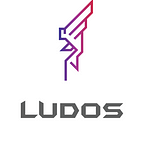The Predicament Of Supernodes and The Exploration of Community Governance
With the hype of EOS in 2018, the supernode and its representative DPOS consensus mechanism also ushered in large-scale promotion and application in 2018 and became iconic in the blockchain industry.
First:
The birth and the current status of Supernodes
Supernodes, which is mostly known in the public chain adopting the DPOS consensus mechanism, and it is responsible for packing and producing a few accounting nodes in the production block. This concept quickly became popular in the blockchain industry at the beginning of the year 2018 and became the standard for many emerging public chains. In fact, the DPOS consensus mechanism has been born for more than two years and has been applied in many projects.
Why is the Supernode and DPOS consensus mechanism suddenly became so popular in 2018? This is largely due to the huge marketing implications of the Supernode. Prior to EOS, the DPOS consensus mechanism did not have the concept of a Supernode, but only the concept of a witness and most of the community insiders were responsible for the “witness”, and then EOS renamed “witness” to a more eye-catching name: Supernode or Masternode.
Another important reason is that the blockchain industry is still in the development stage. DApps are increasingly demanding the performance of the public chain. The DPOS consensus mechanism can speed up the transaction processing of the main chain and optimize the operation of the DApp.
Supernodes in the public chain not only bear the responsibility of providing computing power, stable block, and maintenance operation but also have more major responsibilities. Ocean, Liao Yangyang the founder of the EOS Gravity, publicly stated: “Supernodes should be the role of public network infrastructure providers, in-depth participants in governance, and cognitive partners. They rely on the incentives of the public chain to stay alive. It needs to be the largest participant and stakeholder in the public chain”.
Second:
Conclusion on SuperNode and DPOS Mechanism
Multiple dilemmas and doubts are caused not only by the Supernode itself but also the Supernode mechanism and the DPOS consensus mechanism behind it. The essence of many displaying problems of Supernodes is also caused by the DPOS mechanism.
The DPOS mechanism is effective only if all nodes are open and transparent to all users of the currency to observe and vote in a comprehensive manner. However, the majority of small and medium-sized currency holders have too little enthusiasm to participate in governance, and there is a clear phenomenon of people buying votes. “Those people who really care about the DPOS kernel are a small number of the wealthy individuals, mostly in the state of dissociating or not knowing how to do it,” said Sun Yushi, co-founder of EOS Beijing.
In Sun Yushi’s opinion, this is mainly because the current stage of the blockchain is too early, and the total number of users is too small. The users of pure speculative coins are not the “residents” of the blockchain industry. There are very few people who really understand and care about the DPOS mechanism. They don’t care much about community governance and ecology. Instead, they invest in it and promote its development. The low participation rate of small and medium-sized currency holders directly leads to the relative concentration of power, weakens the decentralization of the entire community, and increases the risk of inaction after the Supernode is elected.
For most public chains adopting the DPOS mechanism, the supernode based community governance has more or fewer problems such as process confusion, discourse power concentration or negative inaction, and it still takes a long time to explore and balance.
In general, the DPOS consensus mechanism itself provides a lot of conditions for the concentration of power, which leads to many unreasonable situations. However, most of these problems belong to the governance layer or industry stage problems, and the Layer 2 technology of the public chain such as Ethereum Before the real landing, the DPOS consensus mechanism itself has a role in improving the performance of the public chain. It is almost impossible to replace other mechanisms and technologies.
About Ludos Protocol
Ludos Protocol is a purpose-built blockchain infrastructure project for the gaming community. As only the third blockchain project to be backed by Japanese investment giant Softbank, Ludos addresses numerous shortcomings in the existing gaming landscape. Its main chain + multi-sidechain architecture allows games to run entirely on their own blockchain, preventing scalability issues that have plagued previous blockchain-based games. Additionally, the Protocol seeks to create a gamer-friendly ecosystem whereby game developers and gamers can come together to easily crowdfund and build on the platform. The use of non-fungible tokens (NFT’s) within the ecosystem will allow gamers to swap assets in one game for assets in another. Finally, through their partnership with FullPay Japan, Ludos will give gamers the chance to use LUD tokens that are earned in-game to shop and buy at a range of retail stores in Japan and later the world.
Ludos Protocol Links
Telegram Channel: https://t.me/LudosProtocol
Telegram Announcement Channel: https://t.me/LudosAnnouncements
Website: https://www.ludos.one/
Facebook: https://www.facebook.com/LudosProtocolOfficial/
Twitter: https://twitter.com/LudosProtocol
Reddit: https://www.reddit.com/r/LudosProtocol/
BitcoinTalk thread: https://bitcointalk.org/index.php?topic=5064140
